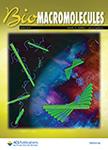版权所有:内蒙古大学图书馆 技术提供:维普资讯• 智图
内蒙古自治区呼和浩特市赛罕区大学西街235号 邮编: 010021

作者机构:Flinders Univ S Australia Sch Chem Phys & Earth Sci Bedford Pk SA 5042 Australia CSIRO Mol & Hlth Technol Clayton Vic 3168 Australia
出 版 物:《BIOMACROMOLECULES》 (生物大分子)
年 卷 期:2009年第10卷第3期
页 面:573-579页
核心收录:
学科分类:0710[理学-生物学] 081704[工学-应用化学] 07[理学] 08[工学] 0817[工学-化学工程与技术] 070303[理学-有机化学] 0703[理学-化学]
基 金:Flinders University Australian Research Council CSIRO
主 题:Azides/chemistry Cell Proliferation Coated Materials, Biocompatible/chemical synthesis Coated Materials, Biocompatible/chemistry Glass/chemistry Humans Macromolecular Substances/chemical synthesis Macromolecular Substances/chemistry Particle Size Polyethylene Glycols/chemistry Surface Properties Tissue Array Analysis/methods Tumor Cells, Cultured Ultraviolet Rays Ultraviolet Rays
摘 要:The fabrication and characterization of chemical patterns using a technique that can be readily integrated with methods currently used for the formation of microarrays is presented. A high density poly(ethylene glycol) coating was deposited on glass slides as a background exhibiting low cell attachment properties. Phenylazide modified polymers were then printed on this background. UV irradiation of these polymer arrays resulted in the cross-linking of the polymer spots and their covalent attachment to the surface. Cell attachment was shown to follow the resultant surface chemistry pattern. Furthermore, the use of a robotic contact printer enabled the facile deposition of DNA microarrays on top of and aligned with the polymer microarrays. A transfected cell microarray was generated in this way, demonstrating not only the ability of this platform to limit cell attachment to specific regions, but the suitability for chip-based functional genomics, in particular, and high density cell assays in general.